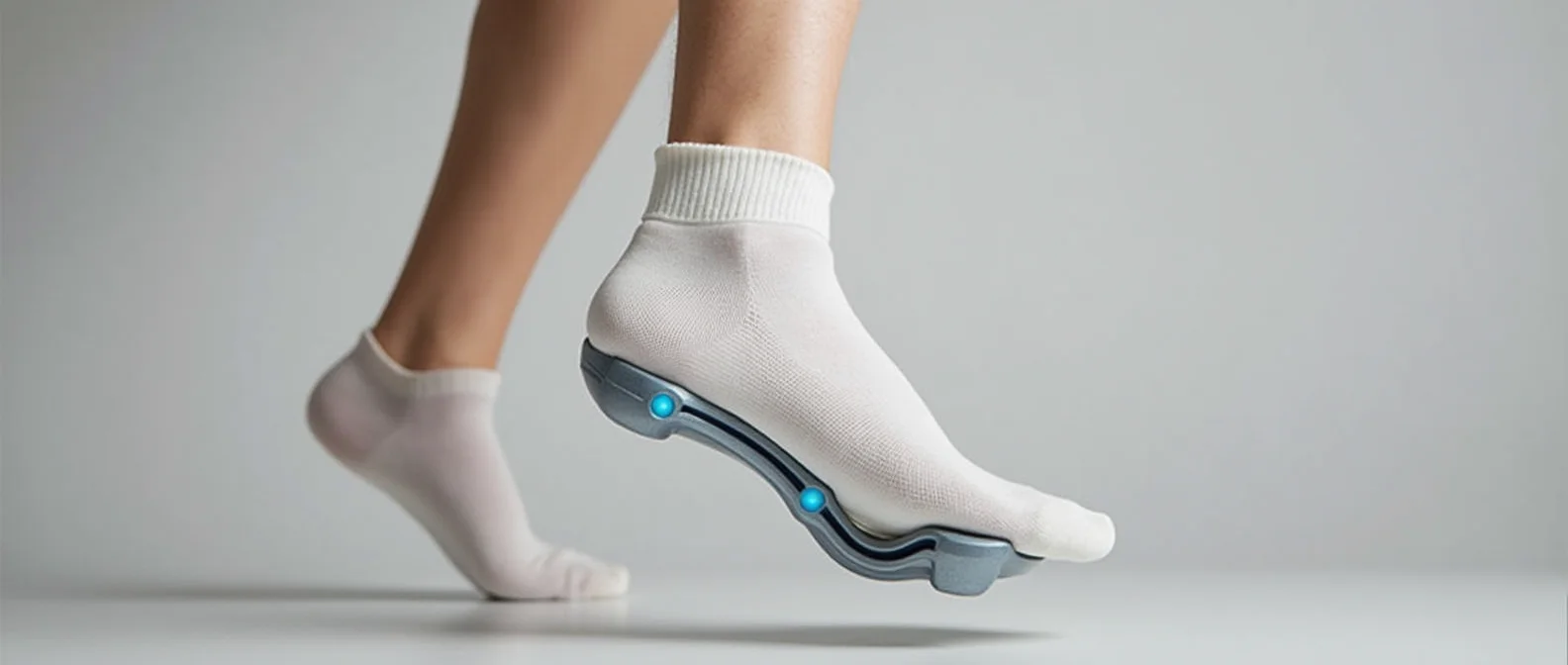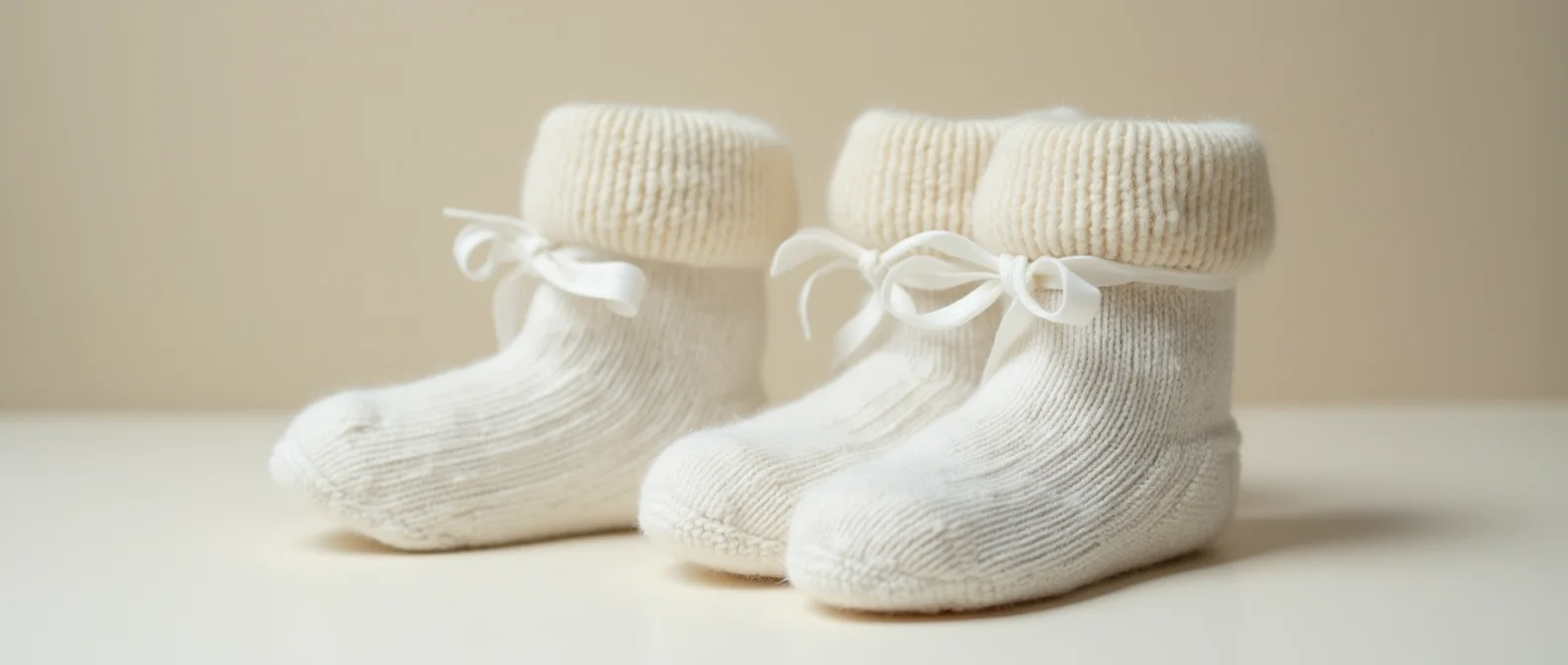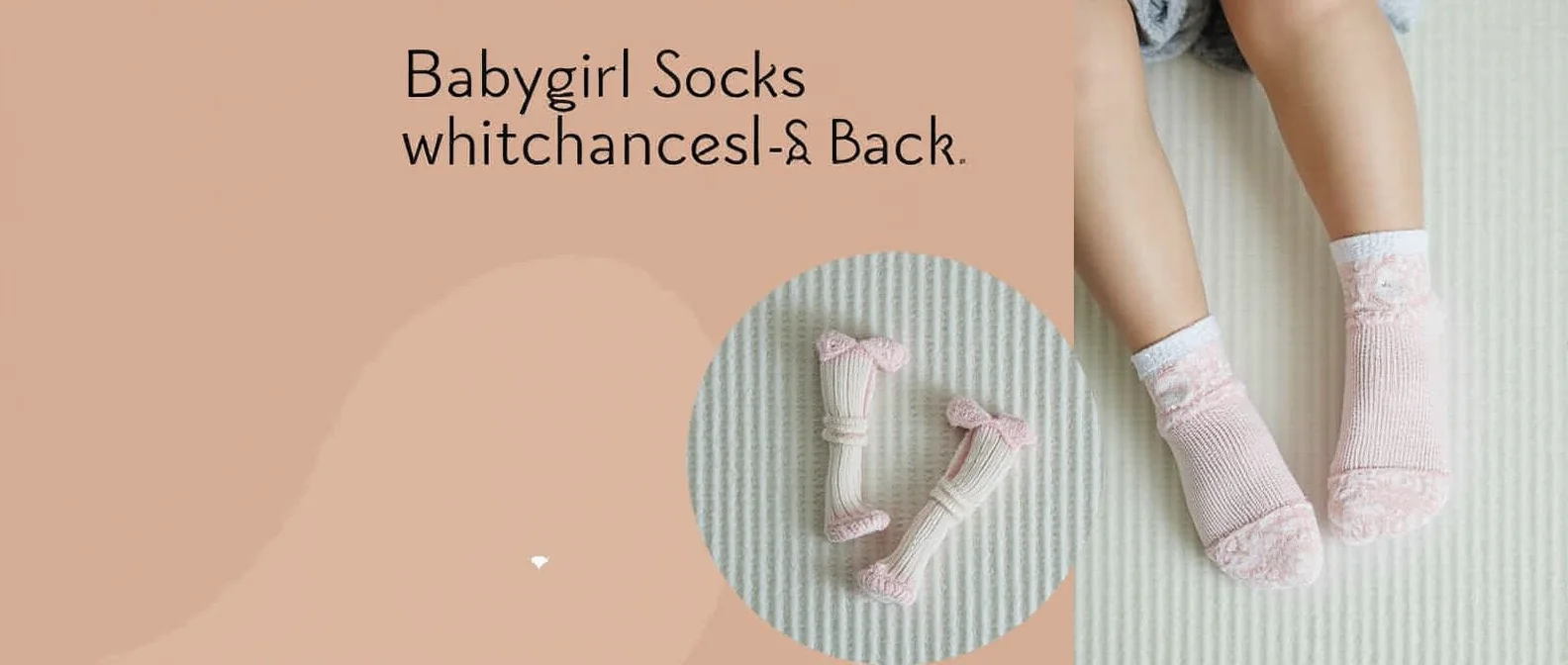Currently Empty: $0.00
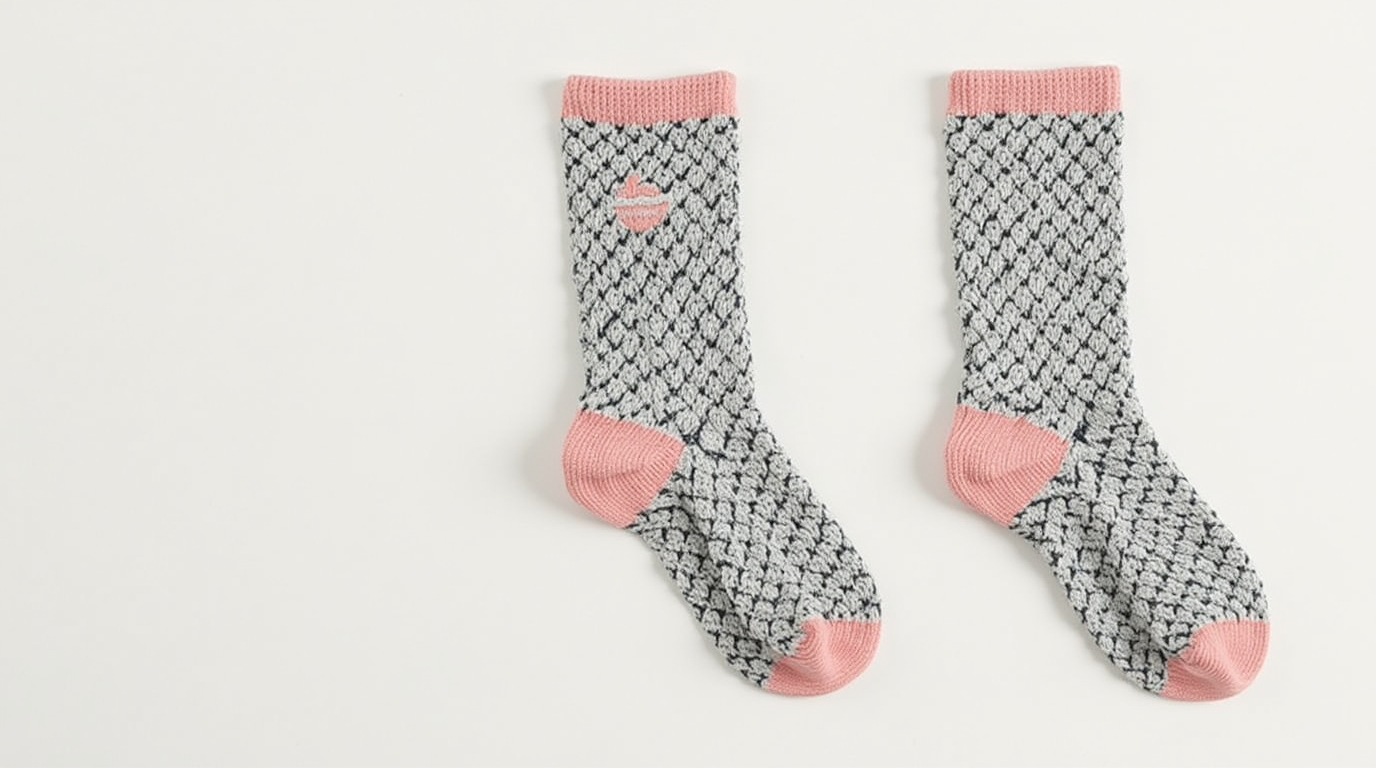
Did you know that a baby’s feet can grow up to 1.5 inches in just two years? This fast growth makes finding the right socks a big challenge for parents. The right fit is key to supporting foot health and keeping your baby comfy.
We’ll look at what matters most when buying 12-24 month socks. This includes the right size, materials, and special features for growing babies. With this info, you can pick the perfect socks for your child’s changing feet and help them feel confident as they explore.
Table of Contents
Understanding the Importance of Proper Sock Sizing for Toddlers
As infants grow into active toddlers, the right sock size becomes key. The fit of kids’ socks affects their growing feet. It’s vital for their comfort and health, especially for 12-24 month-old babies.
Impact on Foot Development
Rightly fitted socks support a toddler’s foot growth. The wrong fit can cause discomfort and even long-term foot issues. Choosing the right infant socks and kids’ socks is crucial for healthy feet.
Common Sizing Challenges
Finding the perfect fit for growing toddler feet can be tough. Grow with me socks are vital for their changing size. Keeping up with their growth is essential for comfort and support.
Growth Rate Considerations
Toddlers grow fast, especially in their feet. Parents need to check the fit of infant socks and kids’ socks often. This ensures their feet stay supported and comfortable.
Knowing the importance of proper sock sizing helps parents support their toddlers’ foot health. It ensures their little ones are comfortable as they explore the world.
Essential Features of 12-24 Month Socks
As babies grow into active toddlers, finding the right socks is key. They need comfort, safety, and support for their growing feet. When picking cotton socks, non-slip socks, or one-size socks for your 12-24 month old, look for these important features:
- Breathable Fabrics: Choose socks made from natural, breathable materials like cotton or bamboo. They keep your toddler’s feet cool and comfy all day.
- Optimal Elasticity: The socks should stretch just right to fit your child’s growing feet. They should be snug but not too tight.
- Non-Slip Grip: Toddlers are always on the move. Non-slip socks with textured soles or patterns help prevent slips and falls on smooth floors.
- Adaptive Fit: One-size socks that can grow with your child are perfect. They stay snug and secure as your toddler’s feet get bigger.
| Feature | Benefit |
|---|---|
| Breathable Fabrics | Keeps feet cool and comfortable |
| Optimal Elasticity | Accommodates growing feet without being restrictive |
| Non-Slip Grip | Enhances safety and prevents slips and falls |
| Adaptive Fit | Grows with the child, providing a snug, secure fit |
By focusing on these key features, you can make sure your toddler’s socks are comfy, supportive, and safe. This is important for their active adventures in the world.
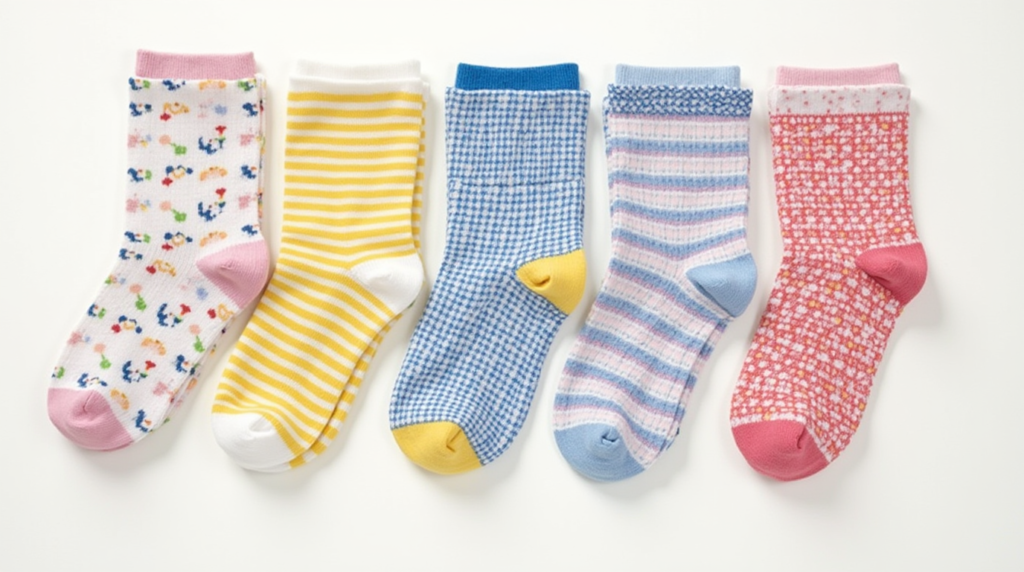
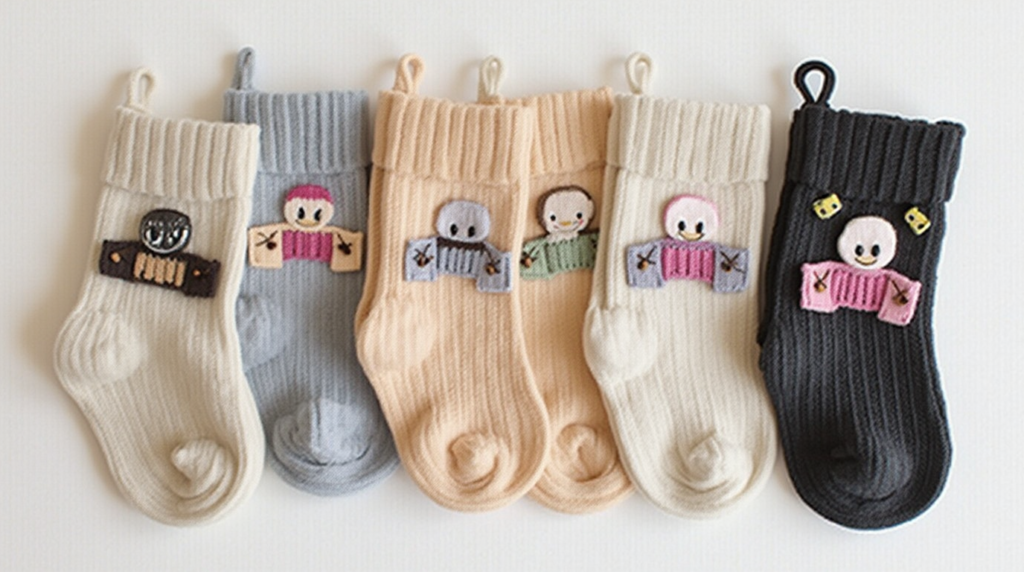
Best Materials for Baby and Toddler Socks
Choosing the right socks for your baby or toddler is key. The material matters a lot. You have natural fibers and synthetic blends to pick from. Each has its own benefits for your child’s comfort and growth.
Natural vs. Synthetic Fibers
Cotton socks are a top choice for parents. They are soft, breathable, and good for sensitive skin. Cotton keeps baby boy socks and newborn high socks dry and comfy all day.
Synthetic fibers like polyester or nylon are durable and fit well. They’re great for active toddlers. But, they might not be as soft as cotton.
Breathability and Comfort Factors
- Natural fibers like cotton are more breathable. They help keep the skin cool and dry.
- Synthetic blends might fit better but can be less breathable. This might affect comfort.
- Choosing a mix of natural and synthetic materials can be the best option. It balances softness, breathability, and durability.
Durability Considerations
Babies and toddlers are always on the move. Socks need to last. Cotton is soft but might not last as long as synthetic blends.
Think about your child’s activity level and how often they’ll wear the socks. This will help you choose the right material.
Non-Slip and Safety Features in Toddler Socks
As toddlers start walking, keeping them safe is a big concern for parents. Non-slip socks are key in this, offering the grip and stability needed to avoid falls. These socks are made with special features for growing feet.
One important feature is the silicone or rubber grips on the soles. These textured surfaces stick well to different floors, helping toddlers stay balanced. This makes them feel more confident as they move around.
Some toddler socks also have extra padding in the heels and toes. This helps protect the foot from blisters and injuries. The socks are also breathable, keeping feet dry and comfortable during play.
- Silicone or rubber grip soles for enhanced traction
- Reinforced heels and toes for added protection
- Breathable, moisture-wicking fabrics for comfort
- Snug, flexible fit to prevent slipping
When picking kids’ socks for your toddler, look for these safety features. They help your child feel secure and confident. The right socks support healthy foot growth and encourage active play.
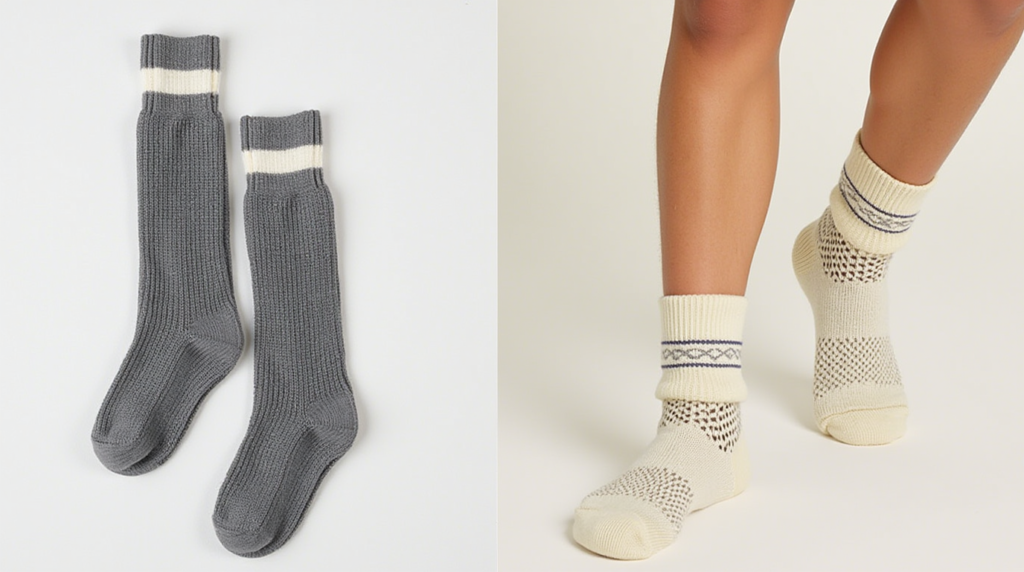
Seasonal Considerations for Baby Socks
As parents, choosing the right socks for our babies is key. We need breathable socks for summer and warm ones for winter. This ensures our little ones stay comfortable and safe.
Summer Sock Options
In the summer, pick socks that let air in and don’t get too hot. Look for lightweight, moisture-wicking fabrics like cotton or bamboo. These keep your baby’s feet cool and dry all day.
Winter Sock Selection
Winter brings the need for thicker, warmer socks. Choose materials like merino wool or thermal blends. They keep your baby’s feet warm without making them sweat.
Indoor vs. Outdoor Usage
Think about where your baby will wear the socks. For indoors, soft, flexible socks are best. But for outside, pick socks with grip to prevent slipping.
FAQ
What are the key features to look for in 12-24 month socks?
When picking socks for 12-24 month-old babies, look for high-quality cotton. They should be elastic for a snug fit. Also, non-slip properties are key for support during active play.
Adjustable or “grow with me” designs are great. They help as your baby’s feet grow fast.
How do I ensure proper sock sizing for my growing toddler?
Getting the right sock size is vital for your toddler’s foot health. Start with their current shoe size. Measure their feet often.
Choose socks that fit well and adjust as they grow. Avoid socks that are too tight or loose. They can hurt or restrict movement.
What are the benefits of natural fibers like cotton in baby and toddler socks?
Natural fibers like cotton are best for baby and toddler skin. They breathe well, are soft, and comfy. Cotton socks are less likely to cause skin issues.
They also last longer than synthetic options. This makes them a great choice for your little ones.
Why are non-slip features important in toddler socks?
Non-slip features in toddler socks are key for safety. They help prevent slips and falls. This is especially important when toddlers start walking.
Socks with textured grips or silicone dots on the soles work well. They provide the stability toddlers need.
How do I choose the right socks for different seasons and activities?
When picking socks for your toddler, think about the season and activity. For summer, choose lightweight, breathable socks. They keep feet cool.
In winter, go for thicker, insulated socks. They keep toes warm. For indoor play, pick non-slip socks. Outdoor socks should offer more protection and grip.

